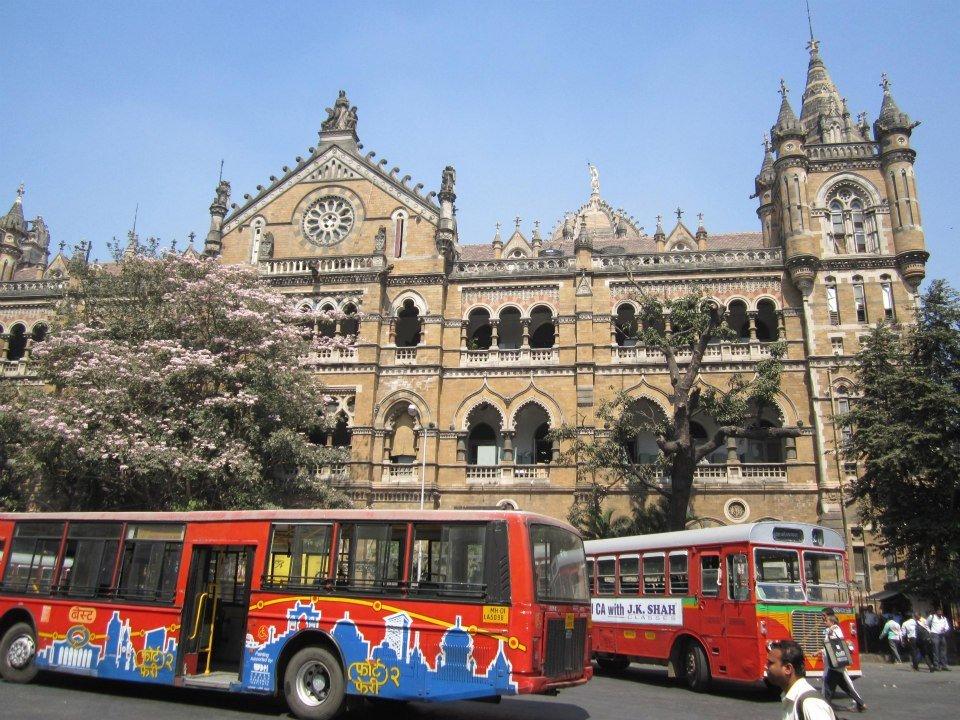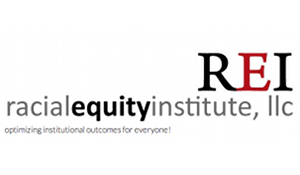Huffpost Impact: CSR in Action


“People don’t buy what you do. They buy why you do it.” – Simon Sinek
Has someone recently sent you a link to a well-written short article about something funny or informative or enraging or weird? Chances are it came from The Huffington Post, the Pulitzer Prize-winning online destination for breaking news from all over the web. But, until I attended the workshop on “Driving Impact Through Digital Media” at the Social Innovation Summit (November 19-20) in Silicon Valley, I didn’t realize that The Huffington Post publishes a section devoted to social impact called Huffpost Impact. And, Huffpost has partnered with companies to sponsor the distribution of that content as part of their CSR programs. I sat down with Brian Sirgutz, Senior Vice President of Social Impact at The Huffington Post, to learn more about it.
Social media for social change Sirgutz started Huffpost Impact in October 2009 when he was President of Causecast. “I did not have a typical media background when I co-founded Causecast,” Sirgutz told me, “but I wanted to build a platform that would let people tell stories that would drive impact for social change.” With more than 90,000 bloggers posting content to Huffington Post, and an every-second news cycle, it can be difficult to hold people’s attention on the stories that matter the most. It’s even harder to translate those stories into action for social change. Sirgutz wants to change that. The rapid explosion of the Internet as a primary distribution point for content has challenged many businesses but it has also created new opportunities to engage people in topics they really care about. “Social media allow people to express their integrity,” Sirgutz noted. “Huffpost Good News took off like a rocket – it’s twice as likely as other content to be shared. People want to share it because it represents their values. We want to evolve the publishing model to become the next way we will connect with each other.” Values-based marketing Scanning the Huffpost Impact categories – Opportunity, Impactx, Global Motherhood, Food for Thought, Millennial Impact, Everyday Heroes, Inspiring Leaders, Love Matters, and Veterans – you notice that many of these channels are sponsored by companies such as Johnson & Johnson, Chipotle, NRG, and Cisco. “This is a step beyond advertising,” explains Sirgutz. “Companies can sponsor a distribution channel dedicated to topics they care about.” Huffpost Impact editors retain all editorial control over what content is published, but mission-aligned sponsors (and they do have to be mission-aligned with the topic) can underwrite a channel. Cisco’s Impactx Sirgutz’s co-panelist at the summit, Mary Anne Petrillo, Global Senior Manager of CSR Digital Strategy at Cisco, is an Impact sponsor. Impactx , “where people, technology, and social impact converge,” provides an editorial hub where like-minded nonprofits can scale their mission. According to Petrillo, providing a high-impact vehicle for others to tell their story has been a very successful and satisfying way for Cisco to meet its objectives in corporate social responsibility. “Huffington Post drives eyeballs,” she noted, “and that drives funding dollars.” The future of CSR Many of the social media producers and architects I talked with at the summit agreed that in an era when consumers expect all content to be free, distribution is the new currency of the online marketplace. If companies want their audiences to pay attention to their message, they must deliver something those audiences care about. Which begs the question, is sponsorship of online information distribution channels a good way for companies to inspire others to act with conscience and charity? In this era when rapid response to global climate, energy, and human health concerns are vital, my hope is that the answer is yes. Images appear with permission. Julie Noblitt is Community Manager at Benetech, a nonprofit that develops and uses technology to create positive social change, and an MBA candidate at Presidio Graduate School in San Francisco.India Close to Announcing Big Climate Change Shift in Lima


The United Nations climate negotiators are meeting once again, this time in Lima, Peru, where—as we have heard before—we will hear promises of making significant progress on climate change. All eyes are on India, which, like China, is often criticized for dragging its feet on developing a solid plan on climate change. Of course, those charges are often unfair, considering these two countries are the workshops for the world. If the U.S. had a real manufacturing sector, this country would be an even more massive polluter. With China taking bolder steps in addressing its carbon footprint, all eyes are now on India. The odds are that the world’s second most populous nation will make a big announcement this week at this week’s Lima climate change conference.
According to India’s daily Business Standard, the Indian government is keen on making “fresh and enhanced commitments to the international community.”
The recent agreement between China and the U.S. to tackle greenhouse gas emissions has apparently nudged the government of Prime Minister Narendra Modi to commission studies to analyze and project India’s future greenhouse gas emissions. Past climate agreements have given developing countries such as India more leeway in formulating their emissions trajectory. In the joint statement with the U.S., China announced its overall greenhouse gas emissions would peak in 2030 and then start their annual decline. Business Standard’s sources in the Modi government are supposedly unimpressed with the joint U.S.-China declaration. Of course, that would mean India would have to up the ante, so all eyes are on the subcontinent as India determines its “peak emissions” year.
One reasons the constant harping on India’s carbon emissions comes across as hypocritical is that its per capita carbon footprint is one-tenth that of the U.S. (and four percent of the per capita emissions of Qatar, a country that loves to tout its “progress” on climate). As the argument goes, countries such as India and China are only trying to do what industrialized nations including the U.S. and Great Britain achieved for their citizens over the course of two centuries.
But rolling out a plan with teeth would also benefit millions of Indians, too. Projects that could help lower India’s carbon emissions, such as a proposed huge investment in solar, could help bring electricity to the 300 million or so Indians who have no electricity. Many Indians also rely on dirty and dirty fuels such as kerosene for light and cooking. Therefore, clean energy technologies such as solar and microgrids can engender massive social change in India through bypassing the grid—akin to how much of the world took a step forward by skipping landlines and adopting cellular technologies. What could come out of Lima this week is more than another government promising a goal to appease environmentalists and western governments; it could deliver progress and hope for the millions of Indians who lack energy access. Such a change could bring more economic opportunities, a better shot at education for young people and increased empowerment for women.
Leon Kaye is based in California and most recently worked for a renewable energy investment company in the Middle East. Follow him on Instagram and Twitter. Other thoughts of his are on his site, greengopost.com.
Image credit: Leon Kaye
Lighting It Up: Sporting Venues Transition to LED Technology


Editor’s Note: This post is part of an ongoing student blogging series entitled The Business Of Sports & Sustainability. This “micro-blog” is the product of the nations first MBA/MPA certificate program dedicated to sustainability in the sports industry. You can follow the series here.
Stadiums and arenas at the professional and collegiate levels, and across leagues from the NHL to the NFL have begun the transition to what is becoming known as the 21st century light source: LED technology. Emitting more light per watt, LEDs require significantly less energy than traditional lighting solutions.
As lighting is typically the second largest energy consumer in sporting venues, installing LED lighting systems offers facility managers one of the fastest paybacks among all the potential energy efficiency upgrades, averaging as little as two to three years. LEDs reduce energy costs up to 75 percent and also provide significant maintenance cost savings, because they last far longer than other lights – typically up to 50,000 hours and some more than 225,000 hours.
These economic wins are matched by environmental benefits including lowered greenhouse gas emissions due to their reduced energy usage. As a result, LEDs have become a go-to choice for operators and leagues looking for viable ways to advance their greening initiatives.
The upstate NY-based company Ephesus Lighting is at the fore of aiding this transition to LED lighting systems within the sporting world. Its engineers outfitted the first arena to make the move to a LED lighting system in 2012, the Syracuse War Memorial. Since then, Ephesus has completed more than 30 indoor arenas and outdoor stadiums, partnering with organizations including the NHL's Ottawa Senators, and most recently the NFL’s Arizona Cardinals. As a result of its work, the 2015 Super Bowl will be the first one played under LEDs.
Being on one of sports' biggest stages is sure to influence further adoption in facilities at all levels. Joe Casper, Ephesus' Co-Founder and CTO, describes the coming change.
“If you go back three years ago, education was definitely needed, but by this past summer things had totally shifted. It's not about education any longer. Based on the successes that have occurred, it’s now a technology that most people feel comfortable with. Getting the Syracuse War Memorial to take this technology on, the first AHL team to do it, really paved the way for the adoption occurring today.”
Besides energy savings, the primary factors driving adoption across sports venues are player performance and fan experience. LED lighting systems impact these areas because they enable more precise light directionality, dimming, and the ability to modulate color to optimize viewer experience. It’s also of note that LEDs provide immediate on and off switching. Anyone who remembers the 34-min outage at a Super Bowl two years ago understands how important that feature is in the sporting world.
While daylight is still known to provide the best conditions for athletes to perform in, LEDs can approximate daylight. This allows players, officials and fans to better see the spin of a ball or specific on-court or on-field movements. At the same time, LED lighting systems can be used like theatrical lights, creating firework or chaser effects in a single, easily customized solution. These kinds of added experience features help bring fans to stadium seats, rather than staying home on their couches.
Even with all of LEDs’ benefits, the transition to these new lighting systems will not be immediate. New construction opportunities for stadiums and arenas are limited, and retrofit projects have both upfront costs and technical engineering considerations to take into account. The leagues most likely to lead the way in adoption are the ones with the most games per season -- baseball and basketball -- because facility owners will have the greatest opportunity to see speedy returns on their investments.
Switching can be a more challenging proposition for NFL stadiums and arenas, because they may only host ten games per season. However,alternate stadium uses including concerts, private events, and exhibition games may increase operators’ financial incentives to make the move.
With several hundred pro and semi-pro sports venues across all leagues, and thousands of sports facilities on college campuses, there is plenty of adoption yet to occur. We’re just seeing the bright beginnings of this new wave in energy efficiency and sports.
Image credit: iStock
Katie Levine is Vice President at Underground. She consults with clients in the social impact space to create strategies, campaigns and communication materials that inspire action.
Video: Antoine Andrews of Symantec Talks Diversity at Net Impact '14


"From a business perspective, we look at diversity as a way to help us make better business decisions, to make sure that we're innovative," Antoine Andrews, director of global diversity and inclusion for Symantec, said at the 2014 Net Impact conference.
"I like to use the term 'insider' and 'outsider.' We've all been in situations where we were either an insider or an outsider," he continued.
"So, if you look at inclusion from that perspective -- of how to help people get comfortable in environments, to be able to be a little bit more creative, to be able to challenge the status quo -- really helps organizations get into a better place."
As part of our Talking Diversity video series, Andrews went on to describe his role at Symantec -- and how he leverages diversity to help departments within the company become more innovative and recruit top talent -- in this 90-second clip.
Antoine L. Andrews is Director of Global Diversity and Inclusion for Symantec Corporation, where he oversees the execution of Symantec’s global diversity strategy, which focuses on the company’s ability to attract, develop, promote and retain diverse talent to help them make better business decisions and deliver innovative products and services to their customers. He is also responsible for elevating Symantec’s global Employee Resource Groups to be seen as a strategic partners in developing the company’s internal diverse talent and becoming an internal voice for diverse customers.
Video: Laura Clise of Areva Talks Diversity at Net Impact 2014


"One of the things that I find really interesting in talking about diversity, and in practicing diversity within my company, is: As you start to look at and try to define what the 'value' is, oftentimes you find that you're having conversations that run parallel to the conversations that we have when we're trying to articulate the business case for sustainability," Laura Clise said at the 2014 Net Impact conference.
"What I think is really fundamental is that both are focused on the translation of and the impact of looking at corporate values and then linking that to value creation."
Clise, who serves as director of external communications and corporate citizenship for Areva, moderated a panel on diversity and inclusion at the conference in Minneapolis last month. She even wrote a 90-second rap to kick things off. (If your day could use a boost, do yourself a favor and check it out here.)
As part of our Talking Diversity video series, Clise talks about the difference between diversity and inclusion -- and how anyone, regardless of background, can be an ally and an advocate for diversity -- in the following clip.
Laura Clise is the Director of External Communications & Corporate Citizenship at AREVA Inc. and a 2013 Aspen Institute First Mover Fellow. She is responsible for corporate citizenship, stakeholder engagement, public relations, and executive communications. She previously led AREVA Inc.’s Sustainable Development department, overseeing the development and deployment of the company's first regional sustainability strategy and supplier diversity program.
Before joining AREVA Inc., Laura’s sustainability experience included work for the U.N. Global Compact, Intel Corporation, and Business for Social Responsibility. She began her career in brand management at General Mills and subsequently worked for McMaster-Carr Supply Company, where she led the international sales operations department.
Laura received an MBA from the Thunderbird School of Global Management, and a BA in International Relations from Carleton College.
Latino Cultures Have a "Green" Legacy, Says Festival Founder


The environmental movement has long-struggled to diversify. Meanwhile, rapid demographic changes make the need for broader engagement all the more imperative. In Colorado this is truly a force: Within 6 years, 52 percent of high school students will be Latino -- these teens will soon be the adults on whom the future of the state will depend.
For Irene Vilar, the founder of the Americas Latino Eco-Festival, diversifying isn't difficult - she argues that Latino cultures in the U.S. and globally are inherently deeply ecologically aware because of traditional indigenous-based reverence for the earth. In fact, as she said at the Colorado Climate Summit in Nov., the poll findings are that "96 percent of Latinos believe in climate change" - findings that replicated elsewhere, including an NRDC poll that showed 68 percent of Republican Latinos want government action to prevent climate change.
Vilar, originally from Puerto Rico and now in Boulder by way of Vermont, started the Americas Latino Eco Festival two years ago, held in September in Boulder and Denver for six days of films, art, music, hikes, parties, and workshops. The festival, the first of its kind in the U.S., lures in arts and culture lovers and then exposes them to green themes, lifestyles, and attitudes.
There is so much there, just looking at the program: the stories of the environmentalism of Chico Mendes and Cesar Chavez, standup by Rick Najera, panels on Latino urbanism in the U.S. and how Chicago is adopting the sustainability practices of Curitiba, Brazil.
Providing the stories of environmental leadership in Brazil and elsewhere in the Americas has been particularly important for young people, Vilar told the Summit. There is a significant kids' component to the festival, including cartoons and participatory art.
"Mother Earth has been the backbone of the indigenous peoples of the Hemisphere for more than 20.000 years. Today it still drives the spirit of the Americas of the South...it resonates in their religions, their social structures, their agricultural practices, and their arts and crafts," writes Vilar in her introduction to the festival.
"Reverence for Mother Earth and what we now call ecosystems and ecology is not a recent achievement but an organizing metaphor for daily survival and resilience. Reconnecting with our “Green” legacy and infusing the shifting demographics of the North with the ecological legacy of the South is the new shade of green."
Vilar is an editor and publisher by day, and the Festival is one of many arts and cultural projects born from her umbrella organization, Americas for Conservation and the Arts. AC+As has other initiatives including a sustainable food initiative and the Americas Latino Book Awards.
"Art unites everyone," says Vilar. "It doesn't use normative language, and it doesn't have an accent."
You can see some of the clips and programming on the ALEF Youtube channel here.
Video: Deena Hayes-Greene of the Racial Equity Institute Talks Diversity at NI14


"We need to build on the diversity efforts that we've been engaged in over the last few decades," Deena Hayes-Greene, of the Greensboro, North Carolina-based Racial Equity Institute (REI), said at the 2014 Net Impact conference.
"I think we've done an effective job, for the most part, in changing the complexion of the people in organizations. I don't know if we have diversified the realities of the people that work in there."
Hayes-Greene serves as managing director for REI, an organization with a vision to "optimize institutional outcomes for everyone." As part of our Talking Diversity video series, she goes on to describe sequential inequities that still exist in business and society -- and what can be done to address them -- in this two-minute clip.
Deena Hayes-Greene is the managing director for the Racial Equity Institute. For the last 11 years, she has been a proud member of the Guilford County Board of Education in Greensboro, NC. Greene's educational background is in Psychology, African American Studies and Justice and Policy Studies.
New benchmark to gauge corporate performance in human rights


A group of investors, an NGO, a think tank and an investor research agency, have launched a project to rank companies on their human rights performance. A total of 500 of the top global companies from four key sectors - Agriculture, ICT, Apparel, and Extractives - will initially be researched and ranked to establish the Corporate Human Rights Benchmark (CHRB) .
The CHRB Steering Group is made up of Aviva Investors, the Business and Human Rights Resource Centre, Calvert Investments, EIRIS, Institute for Human Rights and Business and VBDO.
Steve Waygood of Aviva Investors said: "Our Benchmark will introduce a positive competitive environment as companies try to race to the top of the annual ranking. It will also shine a light on those where performance needs to improve.
“It took more than 60 years from the signing of the Universal Declaration of Human Rights before the UN Guiding Principles on Business and Human Rights were developed. We believe that within six years of their approval, we can help to make these Guiding Principles routine corporate practice through the development and use of the Benchmark."
The Benchmark portal will be housed on the Business and Human Rights Resource Centre website here.
Picture credit: © Zuamir  | Dreamstime com  - Word Cloud - Best Practice Photo
8 Strategies for Cutting Business Travel Emissions


Whether traveling by train, plane, or automobile, these modes of transportation all produce carbon emissions. In fact, the transportation sector accounts for a whopping 28 percent of total greenhouse gas emissions in the U.S. Trimming emissions related to business travel is a big step towards realizing sustainability goals and possibly improving the bottom line. Here are eight strategies for reducing the impact of business travel.
Hold virtual meetings and training sessions
The most dramatic way to reduce business travel emissions is to not travel at all. Virtual meetings and trainings reduce greenhouse gas emissions and save time. Instead of sending out employees, use technology to reduce the need to travel. Some practices that make this more effective are continuing to focus on relationship-building, using a video component, and ensuring that it is easy for all parties to access the virtual meeting platform.
Choose a greener fleet
The fleet is a visible and tangible way to demonstrate a commitment to reduce greenhouse gas emissions. Whenever possible, select the vehicle with the best fuel economy to get the job done. This will reduce fuel expenses and is a brand reflection. In some cases, compressed natural gas is a good choice and some say it can result in a 25 percent reduction in greenhouse gas emissions.
Carefully select the mode of transportation
Although there are some variables, including distance and the number of people in your party, certain modes of transportation generally have lower associated greenhouse gas emissions. For example, travel by motor couch and train are almost always carbon bargain. Because they bring passengers to the city center unlike air travel, it might be possible to avoid renting a car upon arrival.
Choose nonstop flights
Lots of greenhouse gas emissions are related to takeoff, landing, and ground operations, not to mention the decrease in productivity of the traveler from this additional idle time. To reduce your carbon footprint, select nonstop flights. If this isn't an option or its prohibitively expensive, try to fly as directly as possible, avoiding out-of-the-way layovers.
Avoid flying first class
I know the seats are wider and the menu options are great, but unfortunately flying first class as this is one of the most polluting ways to travel. Downgrade your tickets, especially on longer flights.
Driving during off-peak times
The fuel rates of vehicles can double when the roads are congested because fuel economy rapidly declines. Traffic jams are also bad for your employees' health: The driver inhales more auto fumes, and driving during rush hour is associated with high blood pressure and stress levels. For smoother sailing and greater employee productivity, travel when the roads are clear, which in some cases might involve schedule shifting. If you need to travel extensively during rush hour, it might be worth adding a hybrid or electric vehicle (with regenerative breaks) to your fleet.
Use traffic updates
If you must travel during peak times or in highly populated areas, use a GPS with traffic updates or an app such as Beat The Traffic to steer clear of collisions and bottlenecks. As a bonus, this also reduces vehicle wear and tear and fuel expenses.
Offset unavoidable business travel
Once you have reduced the emissions from travel, you can purchase carbon offsets for the remaining travel. Unfortunately, not all offsets are created equal, so do a bit of homework to select a high quality program, such as Terrapass or Native Energy.
Do you have any tips about conducting virtual meetings or greening your fleet? Please share your experiences with us.
Image Credit: Flickr/Mararie (upper photo) and William Murphy (lower photo)
Sarah Lozanova is a regular contributor to environmental and energy publications and websites, including Mother Earth Living, Green Building & Design, Triple Pundit, Urban Farm, and Solar Today. Her experience includes work with small-scale solar energy installations and utility-scale wind farms. She earned an MBA in sustainable management from the Presidio Graduate School and she resides in Belfast Cohousing & Ecovillage in Mid-coast Maine with her husband and two children.
Forced Labor Occuring Now in Uzbekistan's Cotton Fields


Yesterday was the “International Day for the Abolition of Slavery.” Though many of us may consider slavery only a cruel and shameful historical relic, forced labor still generates upwards of $150 billion each year. In other words, modern slavery is, as it was in antebellum America, Big Business. This past fall, for example, millions of men, women, and children across Uzbekistan were forced by the government to leave their homes, jobs, and schools in order to pick cotton for the state. The same thing happens every cotton harvest in Uzbekistan, contributing to the country’s position as one of the world’s leading cotton exporters. Laborers are paid almost nothing, and refusal can be met with public humiliation, violence, or the loss of one’s job or place in school.
Overview of the Uzbek system
Uzbekistan exports nearly one million tons of cotton each year, earning the government a yearly profit of more than a billion dollars and a spot as one of the top five cotton producing countries in the world. It does so by forcing its citizens to do the picking for little-to-no remuneration (about six cents per kg harvested). In 2013, as many as five million Uzbek citizens -- or 16 percent of the population -- were forced to pick cotton.
The Uzbek system is completely sponsored and directed by the state, with orders emanating from the uppermost reaches of government and filtering down to local apparatchiks. For instance, this past August the mayor of Tashkent, Uzbekistan's capital, ordered the “mass mobilization” of citizens to pick cotton in the Jizzakh and Syrdarya regions. The order was an implementation of the official plan for the harvest promulgated by the Uzbek government’s Cabinet of Ministers in July. In Tashkent, all elements of the city government -- including the police, the health department, deputy mayors, and neighborhood councils -- were tasked with the mobilization and transport of would-be workers from the capital to the cotton fields.
Those drafted into the harvest may spend a month or more away from home -- however long it takes to satisfy the government’s quota. This year, laborers were required to gather between 50-80 kg of cotton a day. At night, they slept on cots in local schools or barracks set up directly in the fields.
“Coercion forms the central element of the cotton production system in Uzbekistan,” according to the Uzbek-German Forum on Human Rights (UGF), one of the leading organizations documenting the issue. Quotas may be enforced with beatings and public humiliation, of the type that led to the suicide of one farmer in 2014. As in past years, quotas were imposed on schools, colleges, universities, and hospitals, as well as other public institutions.
Cotton-picking days are long, and may last between nine and sixteen hours. This year, some students worked picking cotton from 5 a.m. to 7 p.m., after which they were forced to spend an additional two hours gathering firewood. Harvest season also means no weekends, holidays, or other days off.
In addition to offending all notions of civil liberties, the Uzbek forced labor system is just plain bizarre. For example, one’s work boss is also one’s boss in the cotton fields and, incredibly, cotton-picking skills may “become a component of annual job evaluations, skewing decisions on promotions.” One can also hire a substitute picker for the harvest season -- those with the misfortune of being drafted into the harvest can, financial wherewithal permitting, hire “a day laborer or homeless person” to fill-in.
Child labor in the Uzbek system
Historically, forced child labor accounted for roughly half of all cotton picked during harvest season in Uzbekistan, according to Cotton Campaign, a coalition of human rights organisations, trade unions, socially responsible investors, and business organizations. This included children as young as 10, many of whom were required to miss between three and four months of school each year as a result.
This year, as in 2012 and 2013, the government did not forcibly mobilized school-aged children on a mass scale. However, the government did not entirely end child labor. In fact, in one region, all seventh - ninth grade classes were cancelled so that the children could pick cotton. In another region, school children were mobilized at the end of the harvest; those classes that failed to pick 10 kg per-child were not allowed to return to school.
Unlike younger school children, third-year students in Uzbekistan’s secondary education institutions, including 17 year olds, were forcibly mobilized on a mass scale across Uzbekistan. Extrapolating from an assessment of available secondary school registries, the UGF concluded that approximately 40,000 17 year olds were “systematically and forcibly mobilized for the cotton harvest in 2014.”
Monitoring
In 2008, Uzbekistan ratified the International Labor Organization’s (ILO) Convention on the Worst Forms of Child Labour and agreed to work toward eliminating child labour in the country. In April of this year, Uzbekistan signed a two-year “Decent Work Country Programme” with the ILO. This year, with ILO assistance, Uzbekistan conducted its own monitoring of the use of child labor in the cotton harvest.
The ILO praised the government’s 2014 monitoring efforts, stating that “Uzbekistan has handled well its own monitoring of child labour during cotton harvesting.”
Yet, a number of the Uzbek monitors’ conclusions, such as that all schools operated normally throughout the harvest, were clearly contradicted by evidence and accounts collected by UGF monitors. Other conclusions, including that there were only 49 instances of youths under 18 even being present in cotton fields, are so far from the UGF’s estimates as to raise serious doubts about their legitimacy.
Moreover, the government still refuses to engage with independent monitors or civil society, and has thus far refused to allow ILO monitors to assess the government’s recruitment practices, a requirement of the ILO’s Decent Work Country Programme.
Harm
The harm caused by Uzbekistan’s forced cotton picking is clear. The government makes no exceptions for breastfeeding mothers or those caring for young children or the elderly. At least 17 people died and 35 were injured in this year’s harvest. In one particularly tragic event, a woman’s two children died from smoke inhalation after their home caught fire while their mother was in the cotton fields. At least five people died from apparent heart failure or other complications while picking cotton or immediately after returning from the fields. At least three people, including one 7th grade girl, committed suicide.
Progress?
Thankfully, there are some recent signs of progress. Yet, for each step forward it seems there is a corresponding step in the opposite direction. For instance, as of October 15, 2014, 163 apparel companies -- including Adidas, Disney, Gap, H&M, Nike, and Zara -- have signed a Responsible Sourcing Network pledge not to use Uzbek cotton in their products, so long as the country practices any form of forced labor. Yet, the cotton inevitably finds its way to the market, continuing to inure to the government's benefit. By some estimates, 83 percent of 2013’s harvest was shipped to Bangladesh and China.
Perhaps as a result of the apparel industry's boycotts, the Uzbek government is now working with the ILO and, in some respects, improving its labor practices. However, while no longer mobilizing child labor on a mass, countrywide scale is a definite positive, “Reducing the number of children in the fields by forcing even more adults to work against their will is not sufficient.”